 |
|
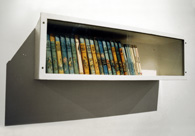
hardy boys, ica, johannesburg, 1993

hardy boys, ica, johannesburg, 1993

stamps, ica, johannesburg, 1993
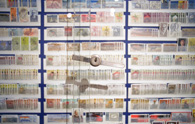
stamps, ica, johannesburg, 1993
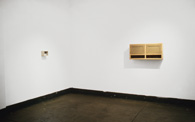
ica, johannesburg, 1993
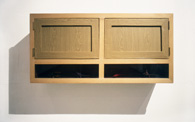
aeroplanes, ica, johannesburg, 1993
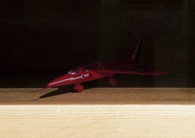
aeroplanes, ica, johannesburg, 1993
|
THE DISPLAY CASE
Institute of Contemporary Art, Johannesburg, 1993
Greg Streak & Siemon Allen
The Hardy Boys, 1993
Stamps, 1993
Shirt & Boots, 1993
Aeroplanes I, 1993
Aeroplanes II, 1993
The Collector, 1993
Compact Disc, 1993
Abacus, 1993
Dining Room, 1993
4 am, 1993
In 1993, I exhibited in a two-person show at the Institute of Contemporary Art in Johannesburg. My work was a series of display-case pieces with found objects, as well as a number of wax and wood interior, architectural models.
The display-case was a device common to a number of my early works, employed to isolate and present both manufactured and found objects. My interest developed out of a need to explore the power of shifting context. A set of Hardy Boys books, my South African stamp collection, or a pair of Doc Marten shoes, common items from different stages of my youth were presented as artworks. The act of displacing these ‘non-precious’ items examined the ‘value’ of such cultural icons and the information encoded in seemingly ordinary things: vicarious adventures in the comic or detective stories, symbols of constructed identity in the coveted brand name products.
Three displays cases contained scenes depicting sparce domestic interiors built out of wax and wood. These were all derived from The Collector shown earlier at the 1993 Volkskas. Unlike the later interiors, The Collector contained an entire housing complex with garage and servants quarters. Paradoxes like exterior/interior, protected/unprotected, precious/unprecious, illusion/reality all portrayed dichotmies; and hinted at issues of possession and control on a political and a personal level.
Siemon Allen, 1998
|
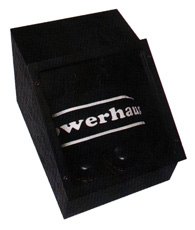
shirt & boots, ica, johannesburg, 1993
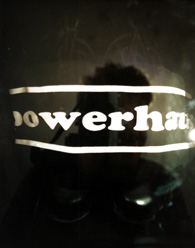
shirt & boots, ica, johannesburg, 1993
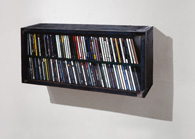
compact discs, unplugged ii, rembrandt galley, johannesburg, 1997
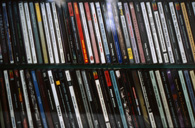
compact discs, unplugged ii, rembrandt galley, johannesburg, 1997
|
SOCIAL CRITIQUE FROM YOUNG TALENT
by Kendell Geers
Business Day, November 1993
Allen’s works are a refreshing solution to the problem of sculpture in the wake of the post-formalist generation - sheets of kitsch synthetic wood-clad crass chipboard boxes containing relics from the artist’s white, middle-class adolescence. There is no cultural or class suicide here, only honest introspection - an examination of the very fabric of his moral, ideological and cultural composition.
A brand new pair of Doc Martin boots rest claustrophobically beneath a limited edition Powerhaus T-shirt; a collection of SA stamps; Hardy Boys books; an REM compact disc - what more could you say about the secret life, the fears, hopes and dreams of a young, white SA man?
Like mantlepieces or carpenter’s trays pregnant with family memorabilia, the works reveal that deep rooted human need to collect and display. There are no inherent values in the objects themselves: sentimental and profound values are imposed by the collector’s own securities.
Formally, the works critique the SA Calvinistic preoccupation with labour, narrative, symbolism and transcendence. Their inoffensive and polite appearance mask a penetrating and incisive social critique comparable in contemporary terms with Hogarth.
Kendell Geers, Business Day, November, 1993
|
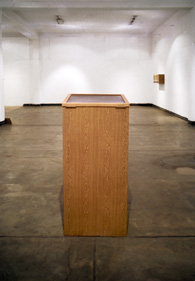
sitting room, ica, johannesburg, 1993
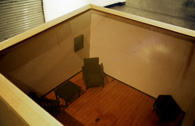
sitting room, ica, johannesburg, 1993
|
OUT OF TIME - SOUTH AFRICAN ART
by Benjamin Weil
Flash Art, January 1995
In the work of South African artists, one finds strong formal ties to Western art produced over the last thirty years. However, there is a strange sense of citation and appropriation rather than of spontaneous identification, as if living in a state of complete isolation had the effect of re-creating the world as it is in the homeland. That particular issue can be found in a work by Durban-based artist Siemon Allen, who completed a display of his family's South African stamp collection depicting the country from a deliberately biased point of view.
Benjamin Weil, Flash Art, January 1995
|
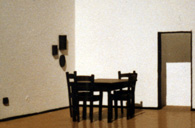
dining room, ica, johannesburg, 1993

dining room, ica, johannesburg, 1993
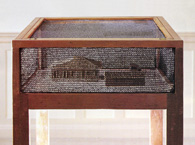
the collector, volkskas, pretoria, 1993
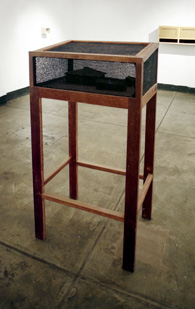 the collector, volkskas, pretoria, 1993 the collector, volkskas, pretoria, 1993
|
|
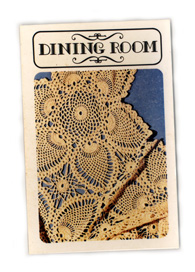
ica invite, johannesburg, 1993
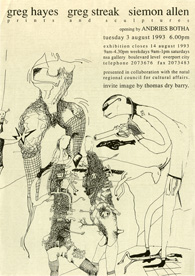
nsa invite by thomas barry, 1993
|
EXHIBITION HISTORY
VOLKSKAS ATELIER 1993
Merit Award
The Collector
University of Pretoria, Pretoria , South Africa
NSA
Siemon Allen, Greg Hayes, Greg Streak
The Hardy Boys and other display case pieces
August 3 - 14, 1993
NSA Gallery, Durban, South Africa
MOMENTUM 1993
The Hardy Boys, Aeroplanes
October 6 - 30, 1993
Pretoria Art Museum, Pretoria, South Africa
ICA
Siemon Allen, Greg Streak
Stamps, The Hardy Boys, Aeroplanes, Shirt & Boots and others
November 14 - December 5, 1993
Institute of Contempoarary Art, Johannesburg, South Africa
FLAT
Ledelle Moe, Thomas Barry, Nkosinathi Gumede, Carol Gainer, Adrian Hermanides & Siemon Allen
Stamps, Return To Sender
March 5, 1994
FLAT Gallery, Durban, South Africa
VITA 93
Stamps, Shirt & Boots
May 10 - July 24, 1994
Johannesburg Art Gallery, Johannesburg, South Africa
UNPLUGGED II
initiated by Malcolm Payne
Compact Discs
February 23 - March 15, 1997
Rembrandt Gallery, Johannesburg, South Africa
|